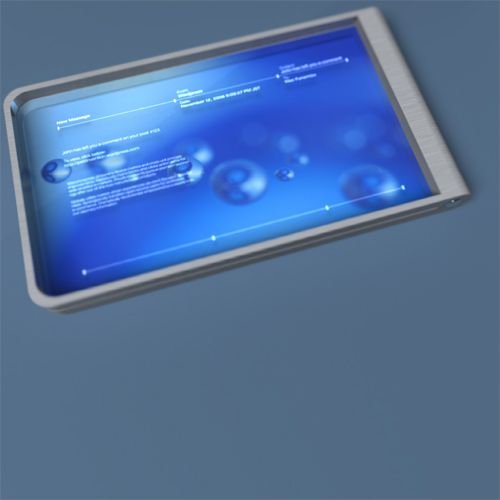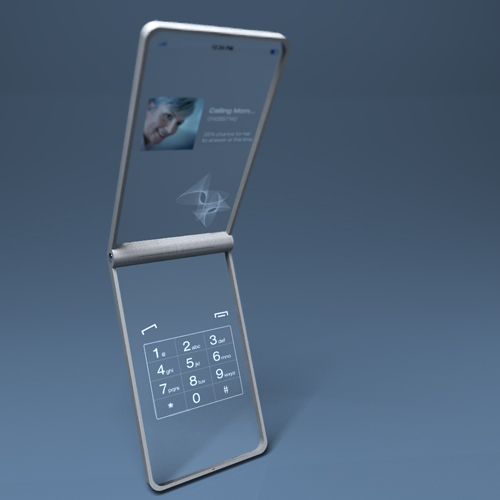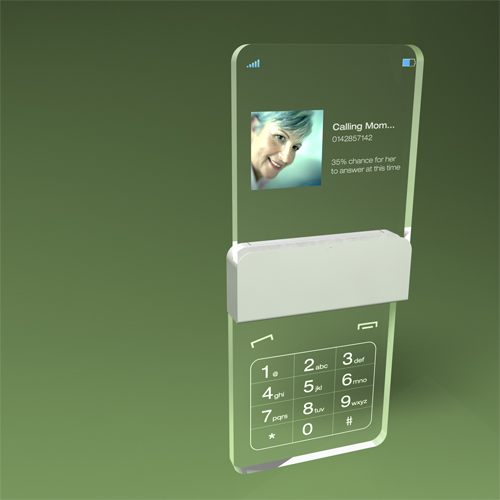Tired of the boring design of my mobile phone, just drew one like Nokia Aeonthat I wanna have.
The previous mobile phone concept seems popular, so I made a few more designs with double glassy layers. Your fingerprints would have to be cleaned off so often, but I want to have one like these.
Fun, interactive desktop hygrometer and thermometer just for fun.


Red circles become blue when the temperature becomes negative.
With Samsung Flexible OLED, how we fold a mobile phone could be limitless especially if it could work as a touch screen.






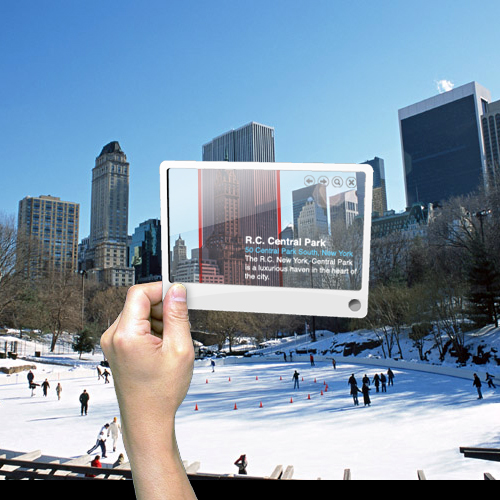
(Followed by a previous post “Future of Internet Search“)
This is what I wish the internet search will be able to do with a mobile device in the NEAR future. Touch screen, built in camera, scanner, WiFi, google map (hopefully google earth), google search, image search… all in one device. Like this way, when you can see a building through it, it gives you the image search result right on the spot.
Choose a building and touch a floor and it tells you more details of the building.
Well, it doesn’t have to be a building, but it can be any object you see. You can use it when you want to know a car model, an insect name, what kind of food is served at a restaurant and how much, who built a bridge, etc. etc. But as a designer myself, I hope it’s able to tell me a name of a font of the type I see, the size, color (in RGB), and so on.
It’s got a scanner built in, so you can use it this way when you want to check the meaning of a word in the newspaper, book, magazine, etc.
It would be much easier to read a real book. You can use the dictionary, wikipedia, thesaurus and anything else available on the web. What do you think?
You must have heard or read about submarines, some of you must have had traveled in these submarines, but have you ever thought of submersible boats. A new concept has come into existence with this revolutionized submersible boat, called Ammonoq. It is equipped with all the necessary accessories to survive beneath the water. Fin wheels provide a steady movement in water where as on-board re-breather facilitates a comfortable breathing for the passengers. It provides easy accommodation for three passengers with a remote key transmitter to control any internal or external devices. A GPS sensor tracks the exact position of the boat and redirects the path wherever it goes. Junji explanations : When on surface, Ammonoq is just like any other boat except that it has a glass top. During the submersible mode, oxygen is made available from the re-breather unit housed under the seat. It provides up to three passengers. Each seat has a compartment where the regulator is stowed and is readily accessible to each passenger. There are also dive tank storages in the rear of the cabin for scuba diving. Therefore, the concept can also be for rescue mission underwater for coast guards. There are two fin-wheels and each is driven by an electric motor. The fin-wheel is made out of the same materials as scuba dive fins and can rotate in the same direction to propel forward or backward. The long fins are used to propel forward and there are also wedge-shape parts on the fins that push against water to reverse. Since the fins are flexible, there is much lesser risk of injuries unlike propellers. The traveling speed is expected to be about 50-60km/h on water, and of course, much slower underwater. Maneuver is also possible by one wheel rotating at a faster rate then the other or one wheel at a still. The steering utilizes electro-servo control that senses at what rate to turn from how much the driver tilts the handles. The control console provides information such as speed, rpm, depth, oxygen level, as well as location by Sonar and GPS. One thing that I did not show is the remote key transmitter which allows the rider to control Ammonoq outside of the cabin. This gives freedom to the driver to enjoy diving while Ammonoq ‘tag’ along side. Designer : Junji Kawabe


I have come to realize that people’s interest in marine leisure is at all time high. More and more people are enjoying snorkeling, diving, and boating. They are many concepts and fully functional personal submersibles. Hotels such as in Dubai provide underwater experience. However, I felt that there is a disconnection between the underwater realm and water surface activity. The concept was the result of my approach to balance the physical and emotional aspects that encompass marine activities: (i)the love, enthusiasm, and curiosity of people for marine experience on water and underwater, (ii)safety of all life form underwater which includes people, (iii)nostalgia for the great spinning wheel of steam boats and aspiration for something new. The way it submerges or re-surfaces is simple: ballast tank in the hull is filled to submerged or emptied to re-surface. Buoyancy is controlled by partially releasing the water in the ballast tank.


Who hasn’t imagined living on their very own floating paradise? For those aboard ResidenSea, a permanent ocean-going residence, this dream is at least a partial reality. Freedom Ship (upon its completion) will take floating cities to a new level and if the Living Universe Foundation has its way the oceans will just be a first stop on the humanity’s path to the stars. This collection is roughly sequenced from most practical (but also most mundane) to most extraordinary (but also least plausible)! The Freedom Ship project is a serious step up from ResidenSea but also unbuilt as of yet, though 1/5 of the on-board living units have already been sold. The concept? A mile-long, energy self-sufficient floating city with absolutely everything included from parks and playgrounds to apartments, businesses, schools, casinos and shopping malls. It will also be fully networked for phone and internet communications. Rather than docking, aircraft will land to resupply the ship and deposit and pick up residents. At 25 stories high the ship would accommodate 40,000 full-time residents and 60,000 total occupants. More than a floating paradise this is designed to be a fully functioning and essentially autonomous city of relatively uniform architecture. Though funding is still needed, signs still point to the eventual completion of this ocean-going wonderland. The Living Universe Foundation is a strange organization dedicated to the long-term colonization of the galaxy. In the long term, they envision humans tapping into the vast natural resources outside of planet Earth - from the sun’s energy (of which we get only a tiny fraction of course) to vast mineral deposits on nearby asteroids. In the short term, however, they believe that a series of self-sufficient, semi-autonomous ocean-going cities are the first step on this eight-step journey to galactic conquest. What are to start as sea-faring colonies would form the basis for future space journeys as these semi-independent enclaves could then be transported to the stars as units. Power would be generated by taking advantage of the temperature differentials at the water’s surface versus the deeps. The sea-borne populations would subsist on sea life and tourist trade and the urban design (shown above) would be based in part on managing water navigational issues. The first step in this project? Apparently, the foundation has started with a land-based colony in Texas with one resident in a trailer. The Celestopia Project is a broad-scoped attempt at colonizing the Earth’s oceans one settlement at a time. According to one source, Celestopean Elemental Separators will (apparently) allow them to mine the ocean’s waters for not only “hydrogen and oxygen” but also for “platinum and gold.” Their more moderate homepage suggests they will use Thermal Energy Converters (OTECs) to harvest power from temperature differentials in the ocean. Life on these oceanic colonies will involve age-extending health practices and domed residences that will be resistant to the forces of nature. Each such floating city will be designed to house 5,000 to 10,000 people and these will slowly cover the surfaces of all of the Earth’s oceans. So where did this all start? As with many present utopian ideals and building strategies a surprising number of philosophical ideas, building strategies and ecological approaches embodied in the aforementioned floating utopian concepts date back to the famous environmentalist, scientist, designer, philosopher and visionary Buckminster Fuller. In the 1960s he developed a design for something known as Triton City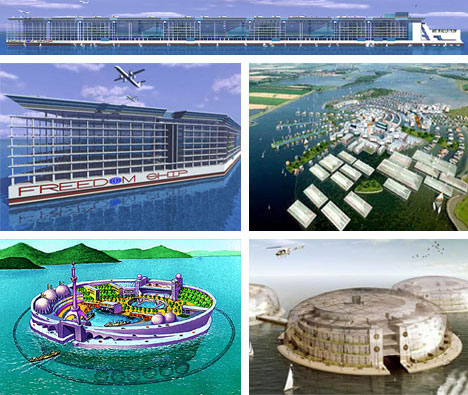
(Check out our complete collection of Underwater and Oceanic Oddities.)
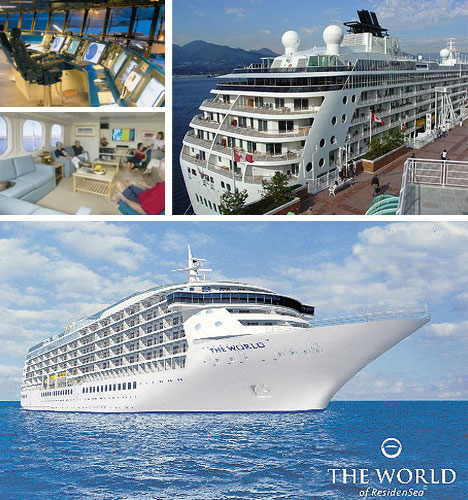
ResidenSea is a (perhaps unsurprisingly) Florida-based company that manages the world’s only mobile and full-time floating luxury community called The World. Think of this as a cruise ship - but on serious steroids. While this project doesn’t claim micronational status it is essentially completely independent of any location. Prices are predictably high, ranging from 2.5 to 7.5 million dollars to own on-board condo spaces. Activities and amenities on board include swimming pools, restaurants, tennis courts, a library, health spa, fitness center and even golf greens. Sure, it sounds a lot like a cruise ship, but it is also a full-time residence (and even tax haven) for many on-board owners. Still, if it isn’t exciting enough, the Freedom Ship (next paragraph) sure should be.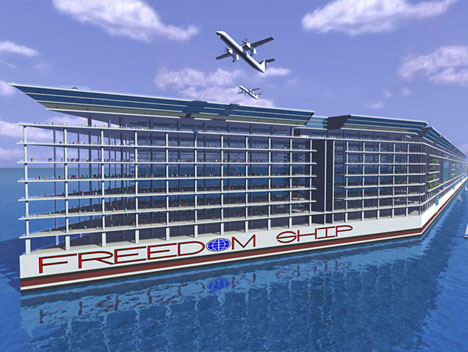
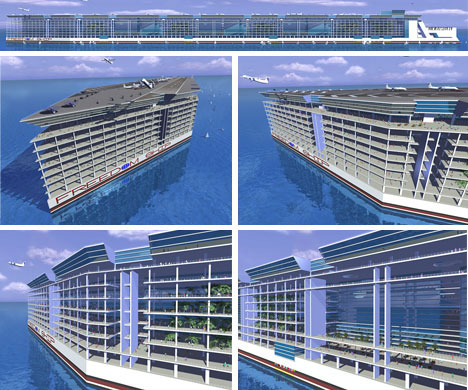
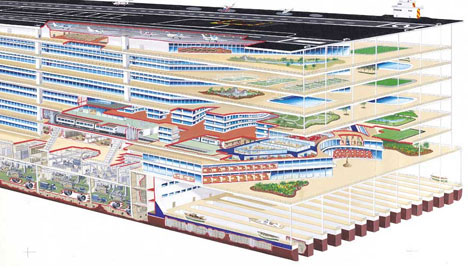
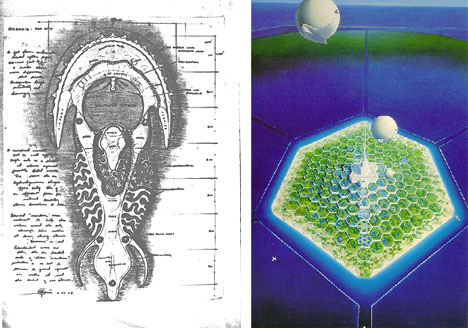
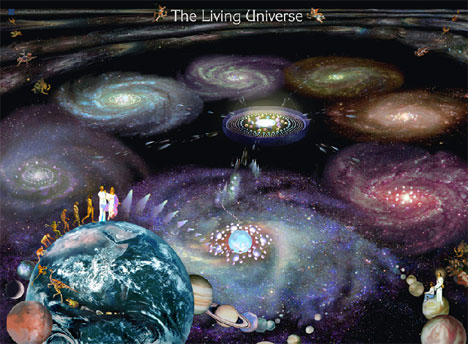

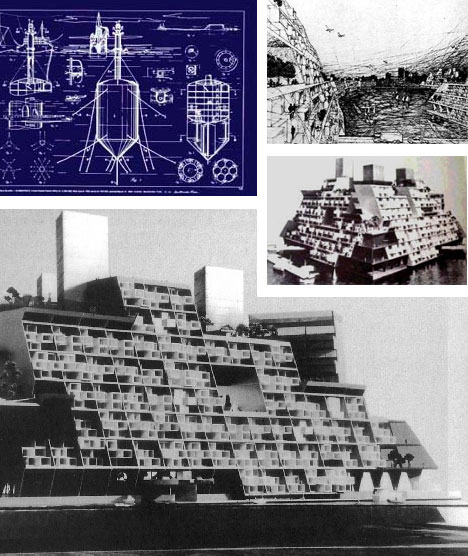
which was to be a floating place of residence for up to 5,000 inhabitants and designed to be resistant to tsunamis and other natural forces that floating cities might encounter on the water. Somewhat amazingly, these designs were approved by the Navy as well as the Department of Housing and Urban Development in the United States. In fact, Baltimore even planned at one point to construct one of these and install it in Chesapeake Bay until governments changed and plans fell through. Many thanks to James Lee of SeaStead.org and be sure to check out theseawesome boats and ships as well as this compelling prequel to this post for more strange and remote utopian projects: 3 of the World’s Weirdest Micronations.









